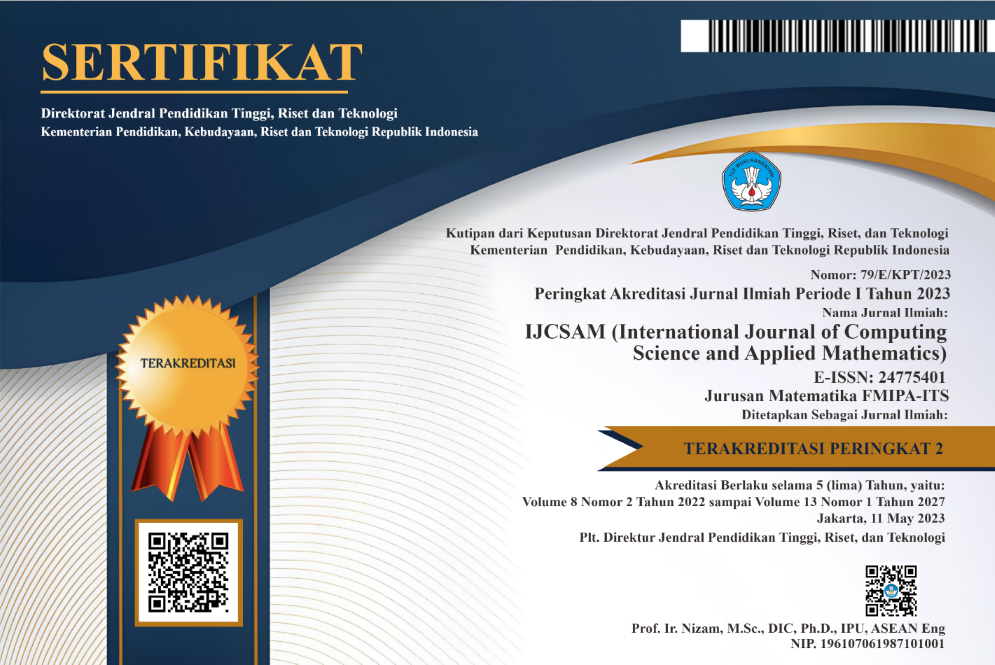Marketing Refurbished Products with Carbon-Emission-Constraint Policy and Consumer Behavior: Offline vs. Online Channels
Abstract
Full Text:
PDFReferences
X. Pan, C. W. Y. Wong, and C. Li, ”Circular economy practices in the waste electrical and electronic equipment (WEEE) industry: A systematic review and future research agendas,” J. Clean. Prod., 2022.
S. Yin, F. Jia, L. Chen, and Q. Wang, ”Circular economy practices and sustainable performance: A meta-analysis,” Resour. Conserv. Recycl., 2023.
X. Pan, C. W. Y. Wong, and C. Li, ”Circular economy practices in the waste electrical and electronic equipment (WEEE) industry: A systematic review and future research agendas,” J. Clean. Prod., 2022.
D. Singhal, S. Tripathy, and S. K. Jena, ”Remanufacturing for the circular economy: Study and evaluation of critical factors,” Resour. Conserv. Recycl., vol. 156, 2020.
N. Saxena, B. Sarkar, and S. R. Singh, ”Selection of remanufacturing/ production cycles with an alternative market: A perspective on waste management,” J. Clean. Prod., vol. 245, 2020.
J. Liu, S. Xia, Z. Wang, J. Nie, N. Ameen, C. Yan, and M. K. Lim, ”How to balance economic profits and environmental protection: The impacts of cash hedging on remanufacturing firms,” Int. J. Prod. Econ., vol. 258, 2023.
X. Hong, L. Wang, Y. Gong, and W. Chen, ”What is the role of valueadded service in a remanufacturing closed-loop supply chain?” Int. J. Prod. Res., vol. 58, pp. 3342–3361, 2020.
S. Mitra and S.Webster, ”Competition in remanufacturing and the effects of government subsidies,” Int. J. Prod. Econ., vol. 111, pp. 287–298, 2008.
N. A. Kurdhi, S. S. Dabadghao, and J. C. Fransoo, ”Revenue management in a refurbishing duopoly with cannibalization,” J. Oper. Manag., 2022.
Y. Wang, X. Yin, Q. Du, S. Jia, Y. Xie, and S. He, ”Consumers’ green preferences for remanufactured products,” in Commun. Comput. Inf. Sci., Springer Verlag, 2018, pp. 332–342.
X. Xia, M. Li, and W. Wang, ”Impact of three emission reduction decisions on authorized remanufacturing under carbon trading,” Expert Syst. Appl., vol. 216, 2023.
Q. Wang, B. Li, B. Chen, Z. Wang, W. Liu, and Y. Cheng, ”Impact of product design on remanufacturing under environmental legislation,” Comput. Ind. Eng., vol. 165, 2022.
X. Xia, M. Lu, and W. Wang, ”Emission reduction and outsourcing remanufacturing: A comparative study under carbon trading,” Expert Syst. Appl., vol. 227, 2023.
Y. Chen, B. Li, G. Zhang, and Q. Bai, ”Quantity and collection decisions of the remanufacturing enterprise under both the take-back and carbon emission capacity regulations,” Transp. Res. E Logist. Transp. Rev., vol.141, 2020.
A. Ghosh, J. K. Jha, and S. P. Sarmah, ”Optimal lot-sizing under strict carbon cap policy considering stochastic demand,” Appl. Math. Model., vol. 44, pp. 688–704, 2017.
Q. Wang, B. Li, B. Chen, Y. Cheng, and Z. Wang, ”Implication of takeback and carbon emission capacity regulations on remanufacturing in a competitive market,” J. Clean. Prod., vol. 325, 2021.
J. Xu, Q. Qi, and Q. Bai, ”Coordinating a dual-channel supply chain with price discount contracts under carbon emission capacity regulation,” Appl. Math. Model., vol. 56, pp. 449–468, 2018.
Y. Huang, S. Liu, and Y. Liang, ”Government policies for e-commerce supply chain with fairness concerns towards sustainable remanufacturing,” Kybernetes, 2022.
Y. Wang, D. Wang, T. C. E. Cheng, R. Zhou, and J. Gao, ”Decision and coordination of E-commerce closed-loop supply chains with fairness concern,” Transp. Res. E Logist. Transp. Rev., vol. 173, 2023.
W. Yan, Y. Xiong, Z. Xiong, and N. Guo, ”Bricks vs. clicks: Which is better for marketing remanufactured products?” Eur. J. Oper. Res., vol. 242, pp. 434–444, 2015.
E. C. McKie, M. E. Ferguson, M. R. Galbreth, and S. Venkataraman, ”How do consumers choose between multiple product generations and conditions? An empirical study of iPad sales on eBay,” Prod. Oper.Manag., vol. 27, pp. 1574–1594, 2018.
C. Ke and B. Yan, ”Trade-in value effects of used products in remanufacturing with considering consumer purchase behavior,” J. Oper. Res. Soc., vol. 73, pp. 608–633, 2022.
A. G. Belba˘g and S. Belba˘g, ”Remanufactured products: A systematic review from the consumer perspective,” J. Clean. Prod., 2023.
Z. Wang, Y. Duan, and J. Huo, ”Impact of trade-in remanufacturing policy and consumer behavior on remanufacturer decisions,” Sustainability, vol. 12, 2020.
A. Ovchinnikov, ”Revenue and cost management for remanufactured products,” Prod. Oper. Manag., vol. 20, pp. 824–840, 2011.
DOI: http://dx.doi.org/10.12962%2Fj24775401.v10i2.21947
Refbacks
- There are currently no refbacks.
View My Stats

International Journal of Computing Science and Applied Mathematics by Pusat Publikasi Ilmiah LPPM, Institut Teknologi Sepuluh Nopember is licensed under a Creative Commons Attribution-ShareAlike 4.0 International License.
Based on a work at https://iptek.its.ac.id/index.php/ijcsam.






